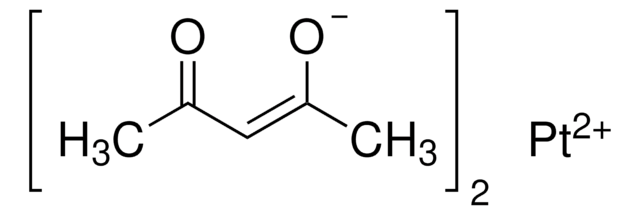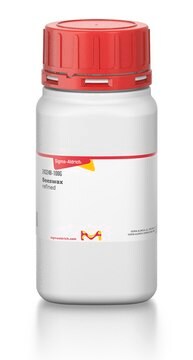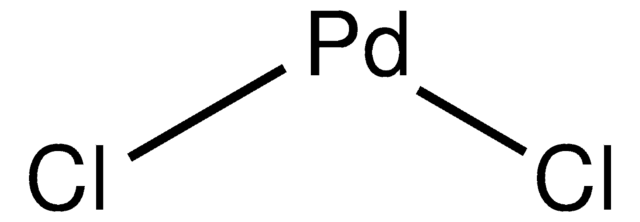262587
Chloroplatinic acid solution
8 wt. % in H2O
Synonym(s):
Hexachloroplatinic acid solution, Hydrogen hexachloroplatinate(IV) solution, Platinic chloride solution, Platinum(IV) chloride solution
About This Item
Recommended Products
form
liquid
Quality Level
reaction suitability
core: platinum
reagent type: catalyst
concentration
8 wt. % in H2O
density
1.05 g/mL at 25 °C
SMILES string
Cl.Cl.Cl[Pt](Cl)(Cl)Cl
InChI
1S/6ClH.Pt/h6*1H;/q;;;;;;+4/p-4
InChI key
GBFHNZZOZWQQPA-UHFFFAOYSA-J
Looking for similar products? Visit Product Comparison Guide
General description
Chloroplatinic acid solution catalyses the hydrosilylation reaction of 1-Hexyne to form l,6-Bis(trichlorosilyl)hexane.
Application
- Platinum precursor in the synthesis of platinum nanoparticles using hydrazine as a reducing agent.
- An electrolyte in the preparation of various carbon-supported platinum nanomaterials with H2SO4 by electrodeposition method in the presence or absence of organic additives.
- An anionic precursor in the preparation of Pt/SBA_BEA catalyst for the hydro isomerization of n-hexadecane.
- A Pt precursor in the preparation of PVP-protected Pt-nanoparticles by seed-mediated growth method.
Signal Word
Danger
Hazard Statements
Precautionary Statements
Hazard Classifications
Acute Tox. 3 Oral - Aquatic Chronic 2 - Eye Dam. 1 - Met. Corr. 1 - Resp. Sens. 1 - Skin Corr. 1B - Skin Sens. 1 - STOT RE 2
Target Organs
Kidney
Storage Class Code
6.1B - Non-combustible acute toxic Cat. 1 and 2 / very toxic hazardous materials
WGK
WGK 3
Flash Point(F)
Not applicable
Flash Point(C)
Not applicable
Personal Protective Equipment
Choose from one of the most recent versions:
Already Own This Product?
Find documentation for the products that you have recently purchased in the Document Library.
Customers Also Viewed
Articles
Noble-Metal Nanostructures with Controlled Morphologies
Related Content
TAP Test Page QA Rel 0302 Merck
TAP Test Page QA Rel 012024 Rel Merck
TAP Test Page QA Rel 021724 Rel Merck
TAP Tes Page QA for 020324 Rel
Our team of scientists has experience in all areas of research including Life Science, Material Science, Chemical Synthesis, Chromatography, Analytical and many others.
Contact Technical Service










